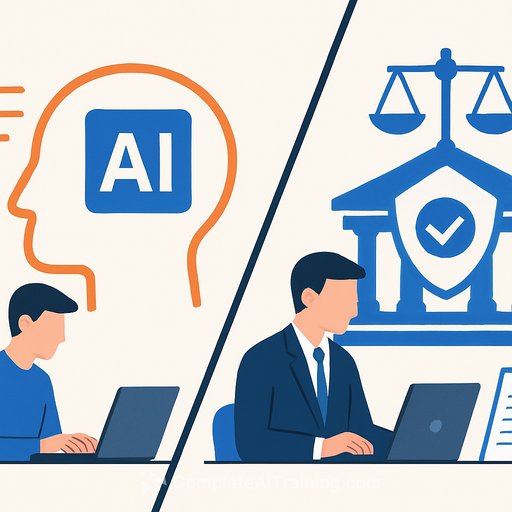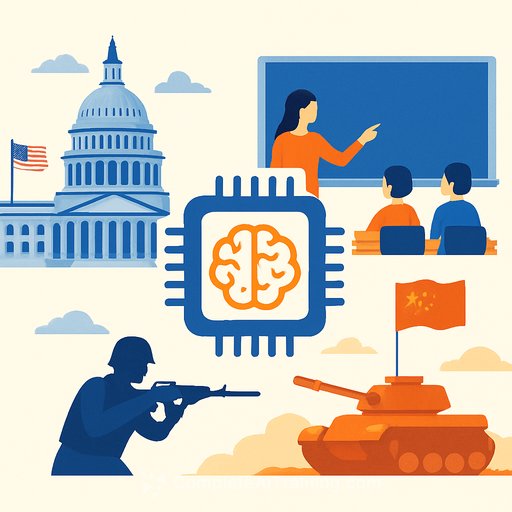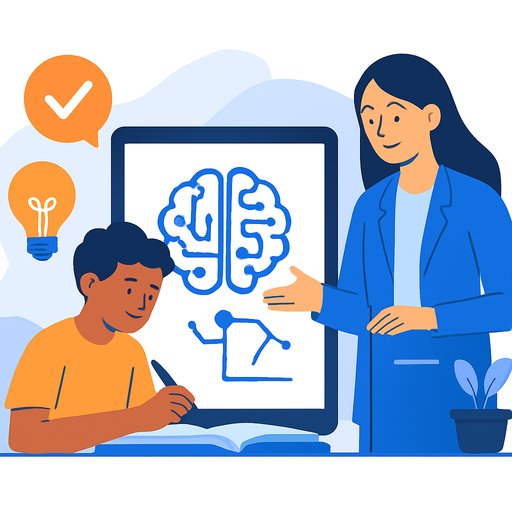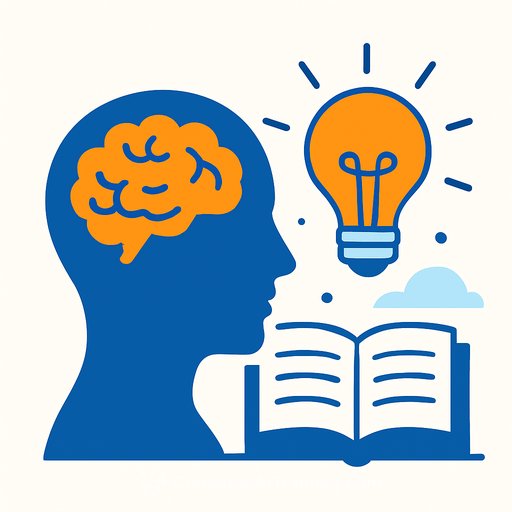Quick Hits in AI for Education: Work, Policy, and Teaching
AI is moving fast, but the labor market is still steady. That gap between perception and reality is your window to rethink programs, assessments, and partnerships before the real wave hits.
Here's what matters this week for educators who shape skills, policy literacy, and career outcomes.
1) Labor Market: Stable So Far, But Don't Get Comfortable
A recent Yale analysis found no clear evidence that AI has meaningfully disrupted U.S. employment since late 2022. Job composition shifts look similar to past tech transitions, and exposure to generative AI has not correlated with unemployment or churn in the data reviewed.
What this means for educators: Update without panic. Emphasize durable skills and measurable AI fluency. Build feedback loops with employers to track task changes over time, not just headlines.
- Map courses to tasks, not job titles. Adjust syllabi where AI is already in use (writing support, coding assistance, data cleaning).
- Collect program signals quarterly: employer advisory notes, internship task lists, portfolio outcomes.
- Teach tool-agnostic workflows so students can adapt as platforms change.
2) Speed Warning: "We Will Destroy Jobs Faster Than We Can Replace Them"
Former Cisco CEO John Chambers predicts AI is advancing at five times the speed of the internet era, with risk of short-term job loss before new roles emerge. He expects deep pressure on entry-level white- and blue-collar roles and calls for aggressive reskilling.
What this means for educators: Shorten your program update cycle. Shift to modular learning, frequent refreshes, and work-integrated experiences that keep pace with tool changes.
- Move from annual to rolling curriculum updates with micro-sprints each term.
- Stand up an employer council that meets every 8-12 weeks to review skill signals.
- Prototype "AI + human" labs where students use AI to draft, then refine with judgment and context.
3) The Silent Standoff: Employers and Workers Think They're Ready-They Aren't
A national survey found workers believe they're equipped, while many employers disagree. Access to employer-led upskilling is sliding, yet both sides rate durable skills-critical thinking, adaptability, communication-above technical credentials.
What this means for educators: Position your institution as the neutral bridge. Teach durable skills as the spine. Wrap them with fast-moving AI tool practice and industry feedback.
- Embed critical thinking, structured problem-solving, and communication in every course.
- Create stackable microcredentials that combine one durable skill + one AI task flow (e.g., "Evidence-based writing with AI drafting").
- Offer employer-facing badges for mentoring, project briefs, and co-assessment to create shared accountability.
Toolkit: Career Paths and Ladders (Campus Edition)
- Define clear skill ladders per program: Foundation (durable skills) → Tool use (AI workflows) → Domain application → Portfolio with employer review.
- Use capstones with real data, real constraints, and AI-usage policies students must follow and justify.
- Track outcomes by task readiness: writing, analysis, presentation, collaboration, and AI judgment calls.
4) Policy Moves: California Passes an AI Safety Law
California enacted the first state law focused on safety protocols for large-scale AI models, including incident reporting and protections for whistleblowers. Large providers face disclosure and risk management requirements tied to high-compute systems.
What this means for educators: Build basic AI governance into curricula. Students should learn responsible use, documentation, model limitations, and incident reporting norms. Campuses running higher-compute research should align with emerging standards.
- Teach students to document prompts, sources, and decisions when AI is used.
- Create a simple AI use policy for coursework and research, with examples of acceptable and unacceptable use.
- Coordinate with IT and legal on data, model access, and reporting lines for safety concerns.
5) Turn AI Into a Teaching Advantage: Assess Higher-Order Thinking
AI is strong at recall and drafting, weaker at evaluation, judgment, and creativity. That's your opportunity. Redesign assessments to test what AI can't do well without human oversight.
- Require critique of AI outputs: fact-checking, bias checks, and context fitting.
- Use "show your process" submissions: sources used, tool settings, decisions made, tradeoffs considered.
- Shift to open-resource assignments with real constraints, messy data, and oral defenses.
- Grade for reasoning quality, evidence, and ethical use, not just final answers.
One-Week Action Plan
- Audit one program for task-level AI impact and update two assignments to assess judgment and context.
- Launch a 60-minute faculty clinic on prompt quality, verification, and documentation.
- Set up an employer roundtable to review top three skills shifting this quarter.
- Add a course-level AI use statement and a simple reflection template for AI-assisted work.
- Collect three student portfolios that show AI-assisted work with reasoning and feedback loops.
Helpful Resources
- Curated AI courses by skill for rapid curriculum add-ons.
- Latest AI courses to keep faculty and staff current.
Bottom line for educators: Keep the core human skills front and center, build practical AI workflows around them, and update fast. Institutions that teach students to question, verify, and decide will set the standard for work that still needs a human.
Your membership also unlocks:






